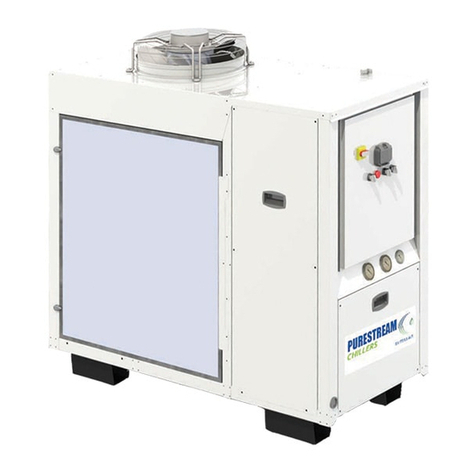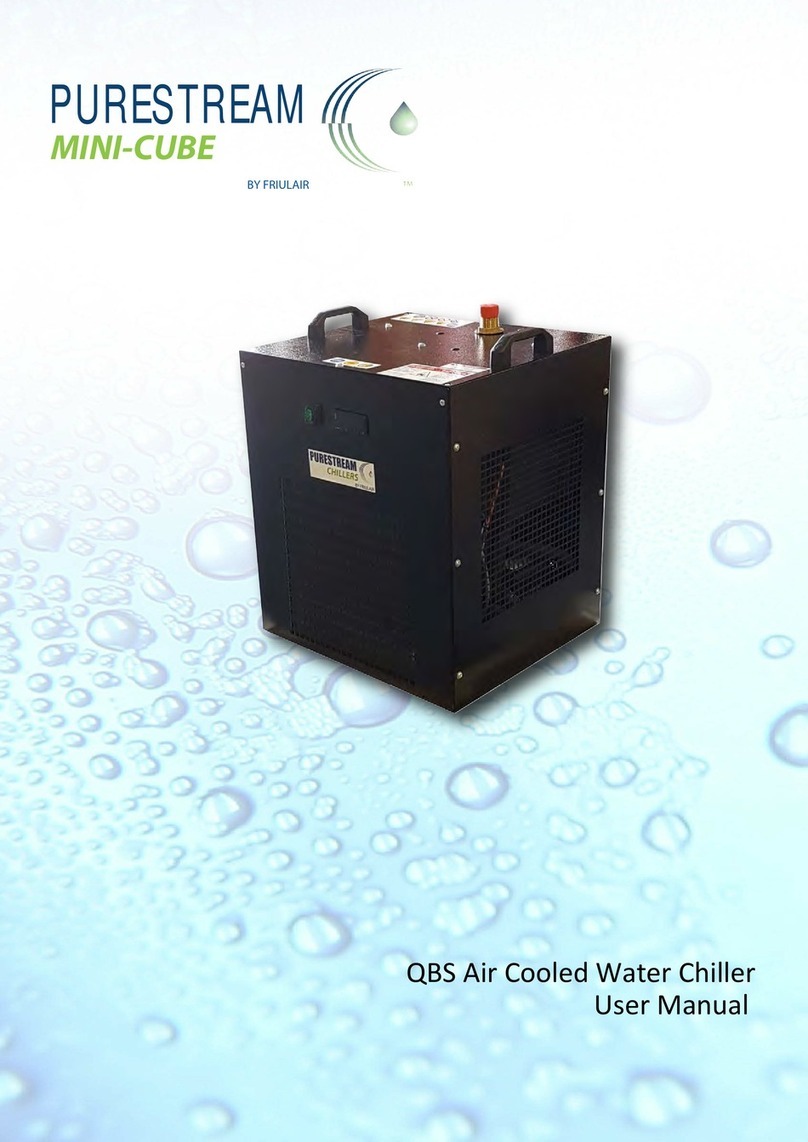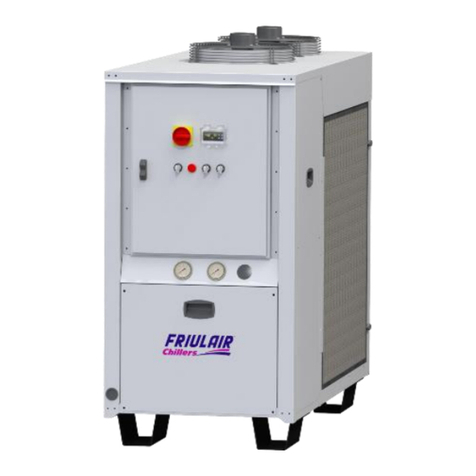
4
7425MUM661 Model: CWB FC - Use and Maintenance Manual Rev02
2
OPERATION AND MAIN COMPONENTS
2.1 REFRIGERANT CIRCUIT
CWB FC chillers use a vapour-compression cycle in a Refrigerant circuit that essentially
consists of the following components: evaporator, compressor, condenser and thermostatic
expansion valve.
Evaporator: this is a braise-welded plate exchanger that exchanges heat between water and
a refrigerant fluid without their coming into contact with each other. It consists of corrugated
stainless steel plates braise-welded to each other with copper. The evaporator is protected
against a lack of water by a differential pressure-switch and against the formation of ice by
an anti-freeze system managed by the chiller's electronic controller.
Compressor: this compresses the vapours coming from the evaporator and sends them to
the condenser at a higher pressure. CWB FC chillers uses scroll compressors; they feature a
low level of vibration and noise; they are protected by magnetothermic circuit breakers and a
temperature sensor in the motor winding.
Condenser: this is a microchannel heat exchanger made entirely of aluminium that
exchanges heat between the refrigerant and the air; it condenses the refrigerant gas (which
flows inside the exchanger) transferring its condensation heat to the air (which flows outside);
this produces refrigerant liquid under high pressure.
Thermostatic expansion valve: this reduces the pressure of the refrigerant liquid coming
from the condenser and sends it to the evaporator. This valve modulates the flow of
refrigerant in such a way as to maintain the constancy of the superheating of the gas exiting
to the evaporator under its various working conditions and, thus ensures that the flow of gas
entering the compressor contains no liquid.
Thanks to these components, the vapour-compression cycle works as follows: the
refrigerant liquid evaporates in the evaporator, chilling the water; the refrigerant vapours are
then aspirated from the compressor, which compresses them and sends them to the
condenser under high pressure; here, thanks to a flow of forced air from the fans, the high-
pressure refrigerant gas is cooled, making it condensed and sub cooled.
The flow of refrigerant liquid then passes through the lamination valve (thermostatic
expansion valve), which drastically reduces its pressure: the refrigerant liquid returns to the
evaporator at a reduced pressure where it again evaporates, taking heat from the water.
2.2 WATER CIRCUIT
A general water circuit mainly consists of: evaporator, pump, three way valve and free
cooling coils.
The water flows into the machine, the three way valve (in function of the difference of the
ambient temperature and the inlet water temperature) distribute the water flow into the free
cooling coils or into the evaporator directly.
When the water is chilled, it is drawn by the pump, which sends it to the user.
A differential pressure switch on the evaporator checks that the flow of water is sufficient and
stops the chiller compressors if the flow-is too low.
Automatic vent valves fitted on plumbing remove any air bubbles in the circuit.
A fine mesh metal filter ought to be fitted at the entrance to the machine in order to catch any
solid residues that could damage the evaporator.
A water gauge and safety valve should complete the water circuit.































